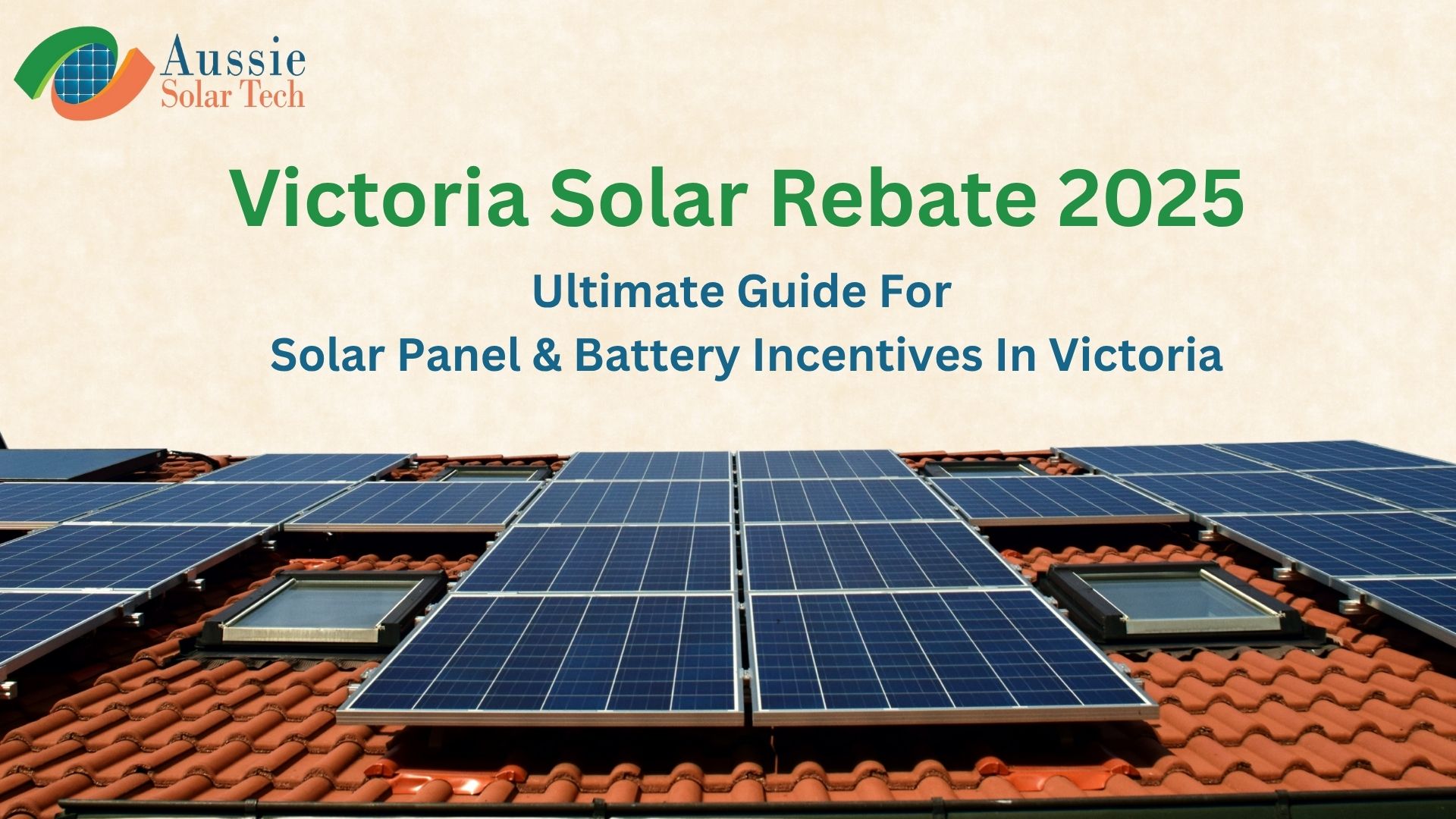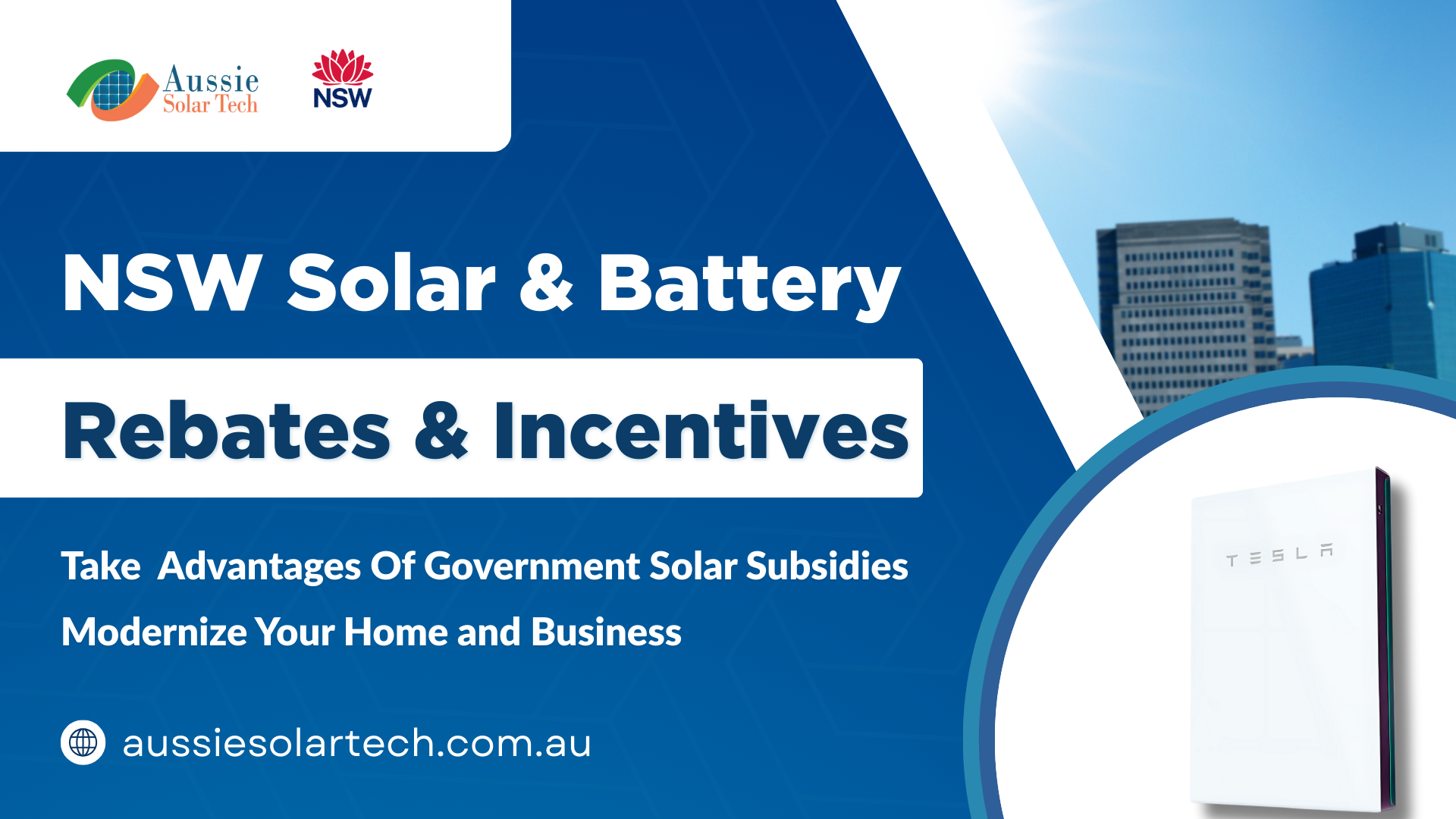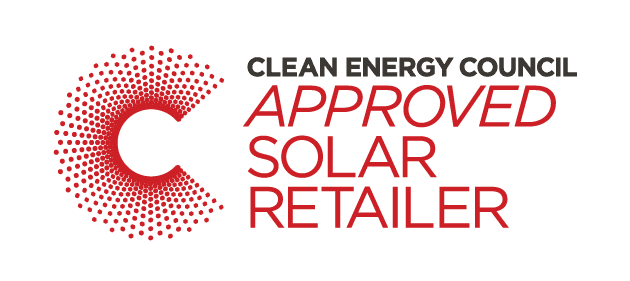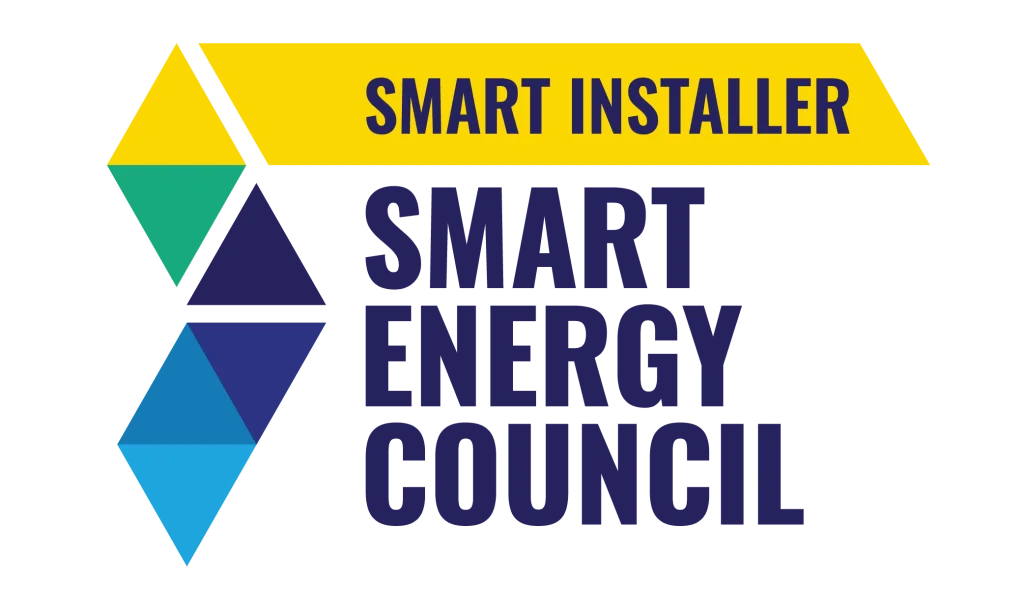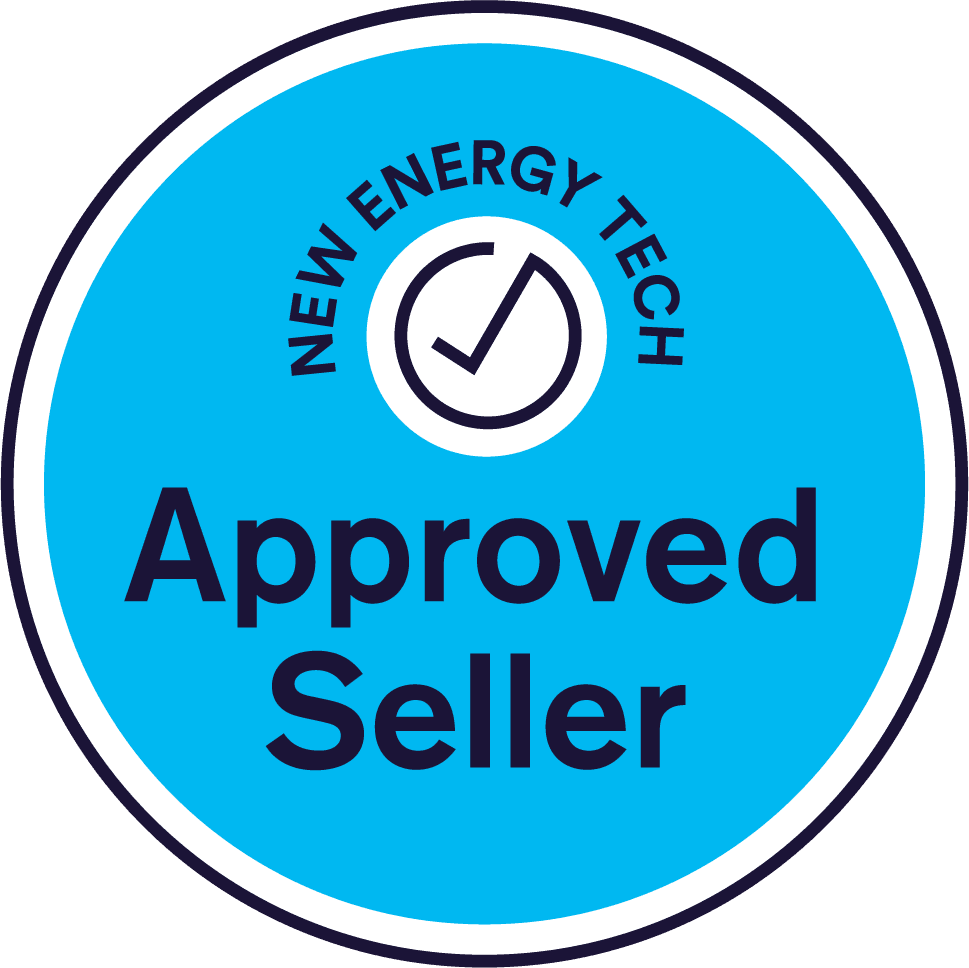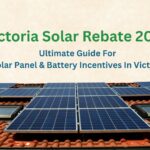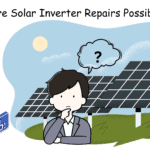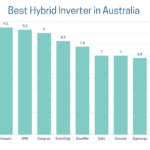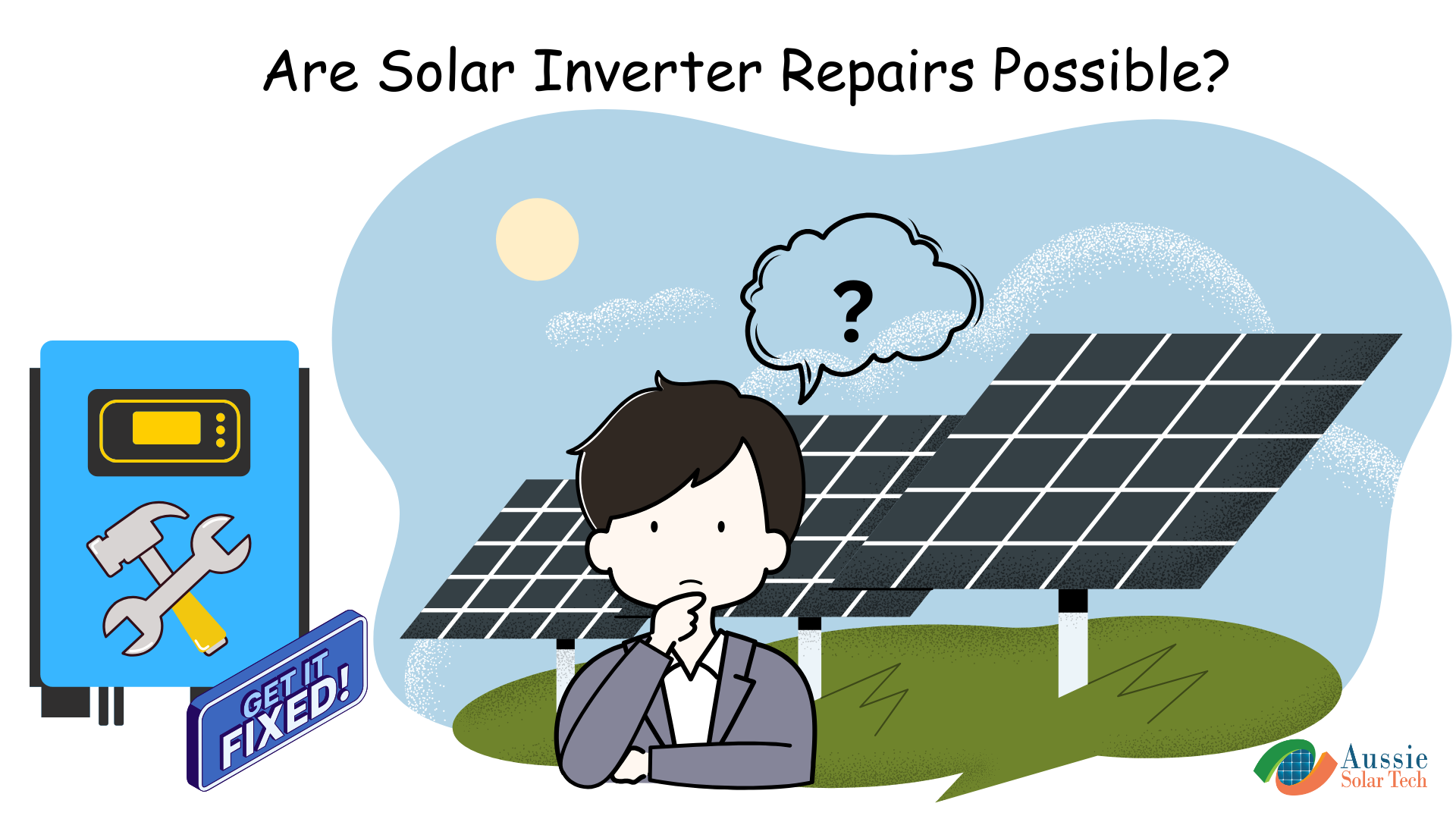Solar Panel Installation: A Beginner’s Guide to Solar Panels for Homes

In This Article
ToggleAre you considering using solar power for your home in Australia? With rising electricity prices and a growing demand for sustainable energy sources, solar power is becoming an increasingly popular alternative to electricity for Australian homeowners. However, if you are new to solar energy, you may need to understand the solar panel installation process and how it works. This comprehensive guide will guide you through the essentials of installing solar panels for your home and provide you with information on how it works, the different types of systems, available rebates and incentives, the best packages, and much more about installing solar power that you need to know.
How solar panels work
Solar panels, also known as photovoltaic (PV) panels, work by converting sunlight into electricity through a process called the photovoltaic effect. To understand, how solar panels work, we need know following terms:
- Solar Panel Components
- Photon Absorption
- Electron Movement and Current Generation
Solar Panel Components
A typical solar panel consists of several layers:
Photovoltaic (PV) Cells
- Function: The core of a solar panel, PV cells are made of semiconductor materials (usually silicon) and are responsible for capturing sunlight and converting it into electricity. When sunlight hits these cells diagonally, it excites electrons in the semiconductor, creating an electric current.
- Composition: Each PV cell consists of two layers of silicon – positive (p-type) and negative (n-type) – which create an electric field that pushes free electrons in a specific direction, generating direct current (DC).
Glass Layer (Cover)
- Function: The glass layer is the topmost protective layer of a solar panel. It allows sunlight to penetrate the photovoltaic cells and protects them from environmental elements such as rain, snow, wind, dust, and debris.
- Properties: The glass is tempered for durability and usually has an anti-reflective coating to maximize sunlight absorption and reduce damage.
Metal Frame
- Function: The metal frame provides structural support for the solar panel. It holds all the components together and ensures that the solar panel remains intact during installation and use.
- Material: Frames are usually made of aluminum due to its light, strong, and corrosion-resistant properties.
Back Sheet
- Function: The back sheet is the protective layer on the back of a solar panel. It helps protect the internal components, especially the photovoltaic cells, from moisture, dirt, and environmental damage.
- Material: It is usually made of a polymer, which is resistant to ultraviolet rays, weather, and water.
Junction Box
- Function: The junction box contains the electrical connections for the solar panels. It contains diodes that allow the system to prevent reverse current flow (which can damage the panels) and will enable you to connect the panels to the rest of the system.
- Components inside the junction box:
- Bypass Diodes: Prevent overheating and reduce power loss in the event of shading or faults in the system.
- Wires: Connect PV cells to inverters and other parts of the solar system
Photon Absorption
Photon absorption in solar panels occurs when sunlight, which is made up of tiny particles called photons, strikes photovoltaic cells made of silicon at an angle. The energy from the photons heats up electrons in the silicon, causing them to break free from their atoms and form electron-hole pairs. An electric field drives these free electrons at the p-n junction (the interface between the positive and negative silicon layers) which creates a flow of electricity. This movement of electrons creates direct current (DC), which is collected by the metal contacts of the solar cell and can be converted to alternating current (AC) to power your home.
The efficiency of photon absorption is crucial in determining the overall performance and energy production of the solar panel.
Electron Movement and Current Generation
When photons are absorbed by the silicon cells of a solar panel, they excite electrons, causing them to break free from their atomic bonds, creating free electrons. At the p-n junction (the boundary between the positive and negative layers of silicon), an electric field directs these free electrons toward the n-type layer, while holes (missing electrons) move toward the p-type layer. This movement of electrons creates an electric current. The flow of these free electrons, driven by the electric field, produces direct current (DC) electricity, which is then collected by the metal contacts of the panel and can be converted to alternating current (AC) to run electrical appliances.
- Inverter: Converting DC to AC
An inverter is a key component of a solar power system. It converts the direct current (DC) electricity generated by solar panels into alternating current (AC) electricity, which is needed to power most household appliances. Solar panels produce DC electricity, but since most household appliances and the electrical grid operate on AC, the inverter performs this conversion. The inverter ensures that the solar power generated by the panels is compatible with the home’s electrical system and allows for uninterrupted power usage. Additionally, it often includes features to monitor system performance and optimize efficiency, ensuring that energy is used effectively.
- Solar Power Distribution
Solar power distribution involves the flow of electricity from solar panels to the home’s electrical system or grid. After the solar panels generate electricity and convert it from DC to AC by an inverter, the electricity is distributed to appliances and devices through the home’s electrical wiring. If the solar system produces more electricity than the home needs, the excess electricity is sent back to the grid, where it can earn credits or payments from the utility company, depending on local feed-in tariff policies. This distribution system helps homeowners reduce their reliance on the grid, reduce energy costs, and contribute to a more sustainable energy network.
- Energy Storage (Optional)
Energy storage in a solar power system, typically through the use of batteries, allows homeowners to store excess electricity generated during the day for use at night or during cloudy periods. This is particularly useful for maximizing the benefits of solar energy, as it enables the home to continue using solar power even when the sun isn’t shining. Batteries, such as lithium-ion or lead-acid, capture and store the surplus energy produced by the solar panels, providing a reliable source of power when needed. By incorporating energy storage, homeowners can achieve greater energy independence, reduce reliance on the grid, and potentially lower electricity costs further by using stored energy during peak demand times when electricity prices are higher.
- System Monitoring
System monitoring in a solar power system involves tracking the performance and efficiency of the entire setup, ensuring it operates at optimal levels. Monitoring systems provide real-time data on energy production, consumption, and any potential issues with the solar panels or inverter. This allows homeowners to detect problems early, such as panel malfunctions or inefficiencies, and make necessary adjustments or maintenance. Many solar systems come with remote monitoring features, accessible via smartphone apps or online dashboards, enabling users to track their system’s performance anytime. By monitoring the system, homeowners can maximize energy production, ensure the system is running efficiently, and ultimately get the most out of their solar investment.
In short, solar panels harness the sun’s energy and convert it into usable electricity for your home. By using sunlight, a renewable and abundant energy source, solar panels provide an eco-friendly and cost-effective way to power your home, reduce electricity bills, and decrease your carbon footprint.
Types of Solar Systems: On-Grid Solar System & Off-Grid Solar System
In Australia, solar systems are typically classified as on-grid (grid-tied) or off-grid, each offering different benefits depending on the location, energy needs, and budget. Here’s a breakdown of both types of systems:
On-Grid Solar System (Grid-Tied)
On-grid solar systems are connected to the electricity grid. These systems generate power during the day, and any excess energy produced is sent back to the grid.
Benefits of On-Grid Solar System (Grid-Tied):
- Cost-Effective: Lower upfront costs compared to off-grid systems because you don’t need to invest in battery storage.
- Feed-in Tariffs (FiTs): Homeowners can earn credits or payments for the excess energy fed back to the grid, depending on the state’s feed-in tariff policies. This helps offset electricity costs.
- Grid Backup: When the solar system isn’t producing enough energy (e.g., during the night or on cloudy days), electricity can be drawn from the grid, ensuring you always have power.
- Best For: Homes located in urban or suburban areas with reliable grid access.
Off-Grid Solar System
Off-grid solar systems are completely independent of the electricity grid. These systems are ideal for remote locations where grid access is unavailable or expensive.
Components of Off-Grid Solar System:
- Solar Panels: Capture sunlight and generate electricity.
- Battery Storage: Excess energy is stored in batteries to be used when the solar panels aren’t generating enough power (e.g., at night or during cloudy days).
- Inverter: Converts the DC power generated by the panels into AC power for home use.
Benefits of Off-Grid Solar System:
- Energy Independence: No reliance on the grid, making it ideal for remote or rural areas without electricity infrastructure.
- Sustainability: A renewable and off-grid solution that reduces dependence on fossil fuels and lowers your carbon footprint.
- Long-Term Savings: Once the system is installed, ongoing costs are low as there are no electricity bills, just maintenance costs.
- Best For: Remote properties, farms, or cabins where grid connection is not feasible or too costly.
Choosing the Right System for Your Needs
-
- On-Grid: Ideal for urban and suburban homes with reliable grid access, and you can take advantage of feed-in tariffs to save on electricity bills.
- Off-grid: is best for remote locations with no access to the grid. It offers total energy independence through solar power and battery storage.
In Australia, on-grid systems are more common due to the country’s well-developed electricity grid and incentives like feed-in tariffs, while off-grid systems are growing in popularity in rural areas and regions with unreliable grid infrastructure.
Solar Panel Installation Process
In Australia, the solar panel installation process is a multi-step procedure that involves several stages to ensure a smooth and efficient transition to solar energy. Below is a detailed breakdown of each step in the process:
-
Initial Consultation and Site Assessment
Purpose: This stage aims to assess your property and determine your energy needs. It helps solar installers design a system tailored to your requirements.
What Happens:
- Energy Needs Assessment: The solar provider will ask about your energy consumption habits, such as electricity bills and peak usage times.
- Site Evaluation: A solar consultant will visit your property to evaluate the best location for solar panels. This includes checking the roof’s condition, its orientation (towards the sun), shading factors (from trees or nearby buildings), and the available space.
- Roof Condition: The installer will ensure that the roof is suitable for solar panel installation. Any repairs or modifications that may be needed will be highlighted at this stage.
- Inspection of Electrical System: The existing electrical system will also be evaluated to determine if upgrades or modifications are necessary for the solar system to function efficiently.
Outcomes:
- Customized energy solution recommendation.
- Clear understanding of costs, savings, and expected benefits.
System Design and Proposal
Purpose: To design a solar system that best suits your property’s needs and to present a proposal for approval.
What Happens:
- System Design: The solar provider will design a custom system based on the site assessment and your energy needs. This includes determining the number of solar panels, inverter type, and battery storage (if applicable). The design will consider factors like roof space, orientation, and angle to optimize performance.
- Energy Production Estimate: The proposal will include an estimate of the energy your solar system will generate, how much it will offset your electricity bill, and how long it will take to achieve a return on investment.
- Financial Proposal: The provider will give a detailed quote, including installation costs, potential rebates, and incentives. This will also outline financing options if needed, such as loans or payment plans.
- Incentives and Rebates: Information about available government incentives, such as the Small-Scale Technology Certificates (STCs) and any other local rebates will be provided.
Outcomes:
- Approval from you to move forward with the project.
- Understanding of the system’s capacity, installation costs, and expected savings.
Permitting and Approvals
Purpose: To ensure that the solar installation complies with local regulations and standards.
What Happens:
- Building and Electrical Permits: Depending on your location, specific permits are required before installing a solar system. This might include building permits for roof-mounted panels and electrical permits to ensure the system meets national standards.
- Council Approval: For some properties, especially in heritage areas or with unique building requirements, approval from the local council might be needed. This can involve the submission of plans and designs.
- Grid Connection Application: A formal application to the electricity distributor (utility) is required to connect the solar system to the grid. This includes details about the system’s capacity, type of inverter, and planned connection point.
Outcomes:
- All necessary permits and approvals are obtained.
- Grid connection approval granted by the utility provider.
Grid Connection and Inspection
Purpose: To integrate the solar system with the electricity grid and ensure everything is set up correctly.
What Happens:
- Installation of Solar Panels and Inverter: The physical installation of the solar panels, inverter, and other system components takes place during this phase. The installers will mount the panels on your roof, wire the system, and connect it to the inverter.
- Electrical Inspection: After installation, a licensed electrician inspects the system to ensure it meets safety standards and is correctly wired. They will also ensure that the inverter is properly connected to the grid and complies with Australian Standards (AS4777 for grid connection).
- Utility Inspection: In some regions, the utility company might send an inspector to verify that the system is correctly installed and complies with grid requirements.
Outcomes:
- The system is connected to the grid.
- All electrical components are inspected for safety and compliance.
- Final grid connection approval.
Monitoring System Setup
Purpose: To ensure that the solar system’s performance can be monitored in real time for maintenance and optimization.
What Happens:
- Installation of Monitoring System: Most modern solar systems come with monitoring capabilities that allow you to track the performance of your solar panels, energy production, and consumption via an app or web portal.
- Configuration: The monitoring system is configured so that you can access the data in real time. This might include energy generation, system status, and any potential issues such as low production or faults.
- User Training: The installer will likely walk you through how to use the monitoring system, explaining how to read the data and make adjustments if necessary.
Outcomes:
- You have access to a dashboard where you can monitor your system’s performance.
- The system is ready for real-time performance tracking.
Activation and Final Checks
Purpose: To activate the system and ensure everything is running smoothly before the official switch-on.
What Happens:
- System Activation: Once everything is installed, the system is switched on and begins generating electricity. The inverter is activated, and the system starts feeding power to the grid (if it’s an on-grid system) or charging the batteries (if it’s an off-grid or hybrid system).
- Final Inspection: The installer or a third-party inspector conducts a final check to verify that everything is functioning as expected. This includes checking that all components are safely installed and that the system is performing optimally.
- Completion of Documentation: Any final paperwork, including grid connection forms and the completion of required certifications, is completed.
Outcomes:
- The system is live and generating electricity.
- Final checks ensure everything is working correctly and safely.
Ongoing Maintenance and Support
Purpose: To ensure that your solar system continues to operate efficiently and reliably.
What Happens:
- Regular Maintenance: While solar systems require minimal maintenance, occasional checks and cleaning of the panels are recommended to keep the system running at peak performance.
Warranty and Support: Most solar systems come with warranties on the panels, inverter, and other components. If any issues arise, you can contact the installer or manufacturer for support. - System Monitoring: Some providers offer ongoing monitoring services that alert you if there’s an issue with the system, such as a decrease in energy production or a fault in the inverter.
- Repairs: If there’s a fault in the system or equipment malfunctions, the solar provider will arrange for repairs or replacements under the warranty terms.
Outcomes:
- Continued operation of the solar system with minimal issues.
- Peace of mind with warranty and support services available.
Is The Solar Panel Installation Process Differ On Different Locations
Yes, the solar panel installation process can differ slightly across various states and territories in Australia, including the Australian Capital Territory (ACT), New South Wales (NSW), Victoria, Queensland, Queensland, and others. While the solar panel installation process is similar across Australia, there are specific variations in terms of state incentives, regulations, and grid connection requirements. Understanding these differences helps homeowners navigate the process and maximize the benefits available in their respective states or territories. Always consult a local certified installer to ensure compliance with your region’s regulations and to take full advantage of available government programs and rebates.
Solar Rebates and Incentives in Australia
Australia offers a variety of solar rebates and solar incentives to make solar energy more affordable. Solar rebates and solar incentives vary by location. Solar rebates and solar incentives are available in areas with higher solar exposure. Here’s a breakdown by state:
-
Federal Incentives: Small-scale Renewable Energy Scheme (SRES)
The SRES offers Small-scale Technology Certificates (STCs) to reduce the upfront cost of solar panel systems. These certificates are based on the energy your solar system will generate. A 6.6kW system, for example, could result in savings of approximately $2,500 through STCs
Visit:. Guide to Small-Scale Technology Certificates (STCs) in Canberra 2025
-
State-Specific Solar Incentives
Australian Capital Territory (ACT)
- Sustainable Household Scheme: Offers interest-free loans ranging from $2,000 to $15,000 for energy-efficient upgrades, including solar panel installation.
- Home Energy Support Program: Assists low-income households and pensioners for energy-efficient upgrades.
- Battery Incentive Program: This program offers discounts of up to $2,400 for eligible homes installing solar batteries.
- Virtual Power Plant (VPP) Participation: Homeowners can participate in VPPs to supply energy back to the grid during peak demand, earning additional incentives.
- Federal Rebate (SRES): The same as the federal rebate, saving you thousands upfront.
- Feed-in Tariffs: Queensland offers some of the most competitive feed-in tariffs in the country, ranging from 6 to 10 cents per kWh of excess electricity fed back to the grid.
- Solar Battery Rebate: Previously offered a rebate of up to $3,000 for solar battery installations.
Best Solar Packages and System Sizes
Solar system sizes are measured in kilowatts (kW), and the size of the system you need depends on how much energy you consume, the size of your property, and the amount of sunlight your location receives.
-
Common Solar System Sizes:
| System Size (kW) | Typical Energy Production | Ideal for | Average Household Usage |
| 3.3 kW | ~12 kWh per day | Small to medium homes | 2-3 people, moderate energy usage |
| 6.6 kW | ~25 kWh per day | Larger homes or homes with high usage (air conditioning, etc.) | 4-5 people, higher energy demand |
| 9.9 kW | ~40 kWh per day | Larger homes or businesses with very high energy needs | 5+ people, large homes, or small businesses |
| 13.33kW | ~60 kWh per day | Larger homes or businesses with very high energy needs | 10+ people, large homes, or small businesses |
How to Choose the Right Solar System Size
-
- Energy Consumption: Review your past electricity bills to estimate how much energy your household consumes. The more energy you use, the larger the solar system you will need.
- Roof Space: Ensure you have enough space on your roof to accommodate the panels. Larger systems (e.g., 10 kW) will require a larger roof area.
- Location: The amount of sunlight your location receives impacts energy production. In sunny areas (e.g., Queensland), smaller systems may generate more electricity compared to systems installed in less sunny regions.
- Budget: Larger systems tend to have higher upfront costs, but they can provide more significant long-term savings by reducing your electricity bills. Consider the return on investment when choosing a size.
Choosing the Right Solar Installer
To ensure a smooth and successful panel installation process, select an accredited installer:
Accreditation: Look for installers accredited by the Solar Accreditation Australia (SAA). This ensures they meet Australian standards and are qualified to install solar systems safely and efficiently.
Experience and Reviews: Check the company’s experience and reputation. Read reviews, ask for references, and ensure they have a proven track record with similar projects.
Maintenance and Long-Term Considerations
Panel Lifespan: Most solar panels come with a 20-25 year warranty. With proper maintenance, your system can last even longer.
Maintenance: While solar systems require minimal maintenance, it’s recommended to:
- Clean the panels: Clean the panels 1-2 times per year to ensure optimal performance.
- Annual inspections: Have a professional check your system annually for optimal performance.
Battery Storage: If you want to store excess energy for use at night or during cloudy periods, consider installing a solar battery like the Tesla Powerwall. This allows you to use solar energy even when the sun isn’t shining.
Conclusion
Solar panel installation is a long-term investment that will save you money and reduce your carbon footprint. By understanding the basics of solar panels, the differences between on-grid and off-grid systems, available rebates, and how to choose the right package and installer, you’ll be able to make an informed decision about going solar.
Whether you’re in a city or a remote location, solar energy can provide clean, renewable power for your home, while offering substantial savings on your electricity bills. Now is the perfect time to embrace solar power and take advantage of the government incentives available to make the switch more affordable.
Reach out to a SAA-accredited installer today and get started on your solar journey!
Why Choose Aussie Solar Tech
Aussie Solar Tech offers unmatched local expertise and top-tier products from brands like Trina, Jinko, SunPower, AIKO, Canadian Solar, Sungrow, Fronius, GoodWe, Tesla etc. Our SAA-accredited installers ensure compliant and reliable installations. Every system is custom-designed to match your energy needs, and we provide complete post-installation support, including maintenance and monitoring. Trusted across ACT, NSW, VIC, and QLD. We are proud to help Australians transition to clean energy.

Shah Tarek is a Solar Energy Consultant with 10 years experience in solar system design and solar consultancy field at Australia. He is now a Director, Operation & Consultancy Division at Aussie Solar Tech, a leading Australian solar retailer and installer. Here he is writing informative and engaging solar content that educates the community on the benefits of solar power. His work supports Aussie Solar Tech’s mission to promote sustainable energy solutions and foster a greener future for Australia.

